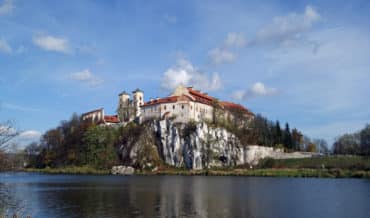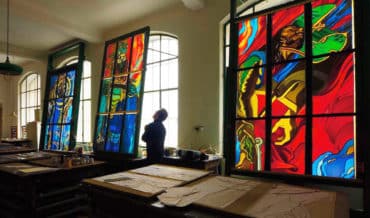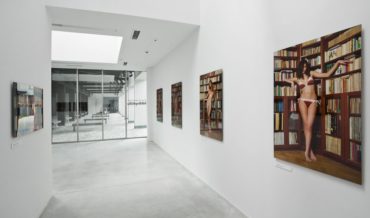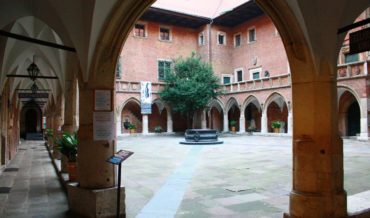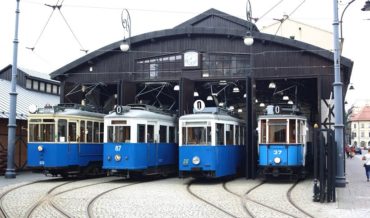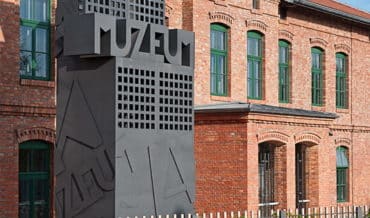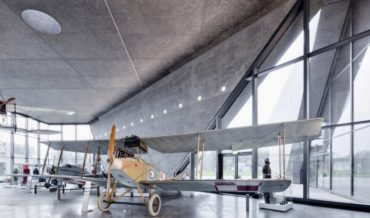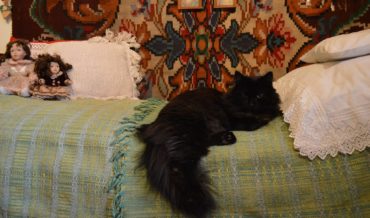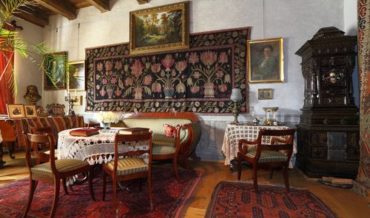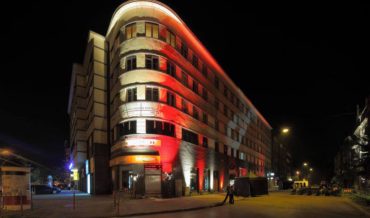Krakow museums
Krakow, as the former capital of Poland and one of the largest cities in our country, can boast a long and interesting history. Its traces are visible today not only on every street, but also in art galleries and museums. Would you like to learn interesting facts about Krak’s past and discover its modern side? We invite you to Krakow’s museums!
Century polish art
Wondering which museums in Krakow are worth visiting you may come across a tough nut to crack, namely that many of them offer interesting exhibitions and expositions. Most tourists choose the most famous ones, such as the National Museum, the Historical Museum of Krakow or the Wawel Castle. However, the city offers many more museums worth seeing. Not all of them are famous, sometimes hidden in the streets of the Old Town or near the center, are an interesting alternative to the most popular. Many of the local museums offer free tours at least once a week.
Museums in Krakow
Most tourists start with a visit to the Museum of the Underground Market Square in Krakow, as it is located literally underneath the Main Square. Also, right after a photo session at St. Mary’s Basilica and feeding the pigeons in front of the Cloth Hall, they head to this famous place. Since 2010 there has been a tourist trail presenting the history of the medieval city. The interactive maps, information boards and authentic fragments of Krakow’s streets will attract the attention of adults and children alike. In the undergrounds you will see what the everyday life of citizens of Krakow looked like several hundred years ago. An amazing journey not only underground, but also in time!
National Museum
The National Museum, or the most recognizable museum in Krakow. Everyone knows it, everyone has heard of it, but not everyone has seen it. The museum has been operating in Krakow since 1879 and has one main building and as many as 10 branches. In the central office you have a chance to see 2 permanent exhibitions:
– The “Arms and Barracks in Poland” Gallery – which is a collection of over 2 thousand Polish military from the Middle Ages to World War II,
– The Gallery of Decorative Arts and Crafts – the largest exhibition of nearly 4 thousand textiles, furniture, silverware and other crafts.
The Main Building of the Museum in the Krzysztofory Palace is also worth a visit. There you can see great animations, prepared by experts in this field. They present reconstructions of buildings and the urban layout of Krakow in different eras. The experience of these expositions can completely change the current look of contemporary Krakow.
Oskar Schindler Krakow Museums
History fans and those curious about life during World War II will surely know the famous story of the Eagle Pharmacy at the Ghetto Heroes’ Square, as well as about the Old Synagogue and Schindler’s Factory. Schindler Museum is located in the original factory of enamel and tin products of Oskar Schindler. The factory thrived during World War II and for many Jews was the only place where they could survive the war and avoid the Holocaust. Visiting Schindler’s Factory gives you the opportunity to learn not only about Oskar’s story, but also about the history of Krakow during the war. Most exhibitions are interactive, allowing visitors to take a real trip back in time to wartime Krakow. The museum has become an extremely attractive place on the map of Poland for tourists from all over the world. It owes its popularity largely to the famous Spielberg’s film production, “Schindler’s List”. Its popularity is largely due to the famous Spielberg’s film “Schindler’s List” in which the fascinating story of Oskar and the Krakow ghetto is presented.
Home Army Museum
Staying in the war times, it is also worth visiting the Home Army Museum at Wita Stwosza Street. It was established in 2000 in order to present the image of the Polish Underground State operating during World War II. The exposition of the institution remains the same all the time. Its compilation took as much as 10 years. The memorabilia were divided into thematic exhibitions, covering the structure and areas of activity of the Home Army, the fate of soldiers after the formation was disbanded, and the Storm action.
Polish aviation museum
We’ve already been to the underground, so now it’s time to take to the air by visiting the Museum of Polish Aviation. Numerous helicopters, airplanes, motor gliders, engines, information about the Polish aces of the air – all this can be found in the Museum of Polish Aviation. The complete exhibition is appreciated all over the world. It took 8th place among the best aviation museums in the world.
Visitors can admire aircrafts from Herman Göring’s collection, Swedish AJSF 37Viggen, P.11c aircraft that took part in the September campaign, and many, many others. Not only the machines and exhibits in the Aviation Museum deserve your attention, but also its area. Airport Rakowice – Czyżyny is one of the oldest in the world, which was established in 1912.
Another site of Krakow museums
Krakow is undoubtedly the city of artists and museums. These institutions can be found on every corner. The ones mentioned above are just the tip of the iceberg – they allow you to learn history and teach both residents of Krakow and tourists. Every year they are visited by countless people. But the role of such institutions does not end only with learning. Going further in the journey through the museums offered to us in the city of Krakow, it is worth hooking other interesting, unusual places.
District for fans of games!
Would you like to have some fun? Visit the Pinball Museum on Stradomska Street. At 15, Pinball triumphed when computers were still in their infancy. There, it has a chance to experience its second youth, which can also be experienced by every visitor! All thanks to the Pinball Museum, which has arrived in Krakow for good!
Stained Glass Gallery
The Stained Glass Studio and Museum continues the tradition of the Krakow Stained Glass Facility, a pearl of artistic heritage. All adults fascinated with art, but also children who can take part in workshops prepared especially for them, will find their place there.
Museum of contemporary art
Krakow Zabłocie also has something to offer the Museum of Contemporary Art MOCAK. This is an excellent offer both for those who are fascinated by contemporary art and for those who are completely unconvinced by it. MOCAK’s aim is to familiarise you with the madness and creations of our contemporaries. It should be added that the Museum building itself is worth a visit due to its unquestionable architectural qualities. It is another place where you can see many great Street-Art projects. A trip along the Street-Art trail allows you to look at the city from a completely different perspective.
Creative Krakow museums
We all know the National Museum, Schindler’s Factory or exhibitions located in the basement of the Cloth Hall. But there are many museums in Krakow which are off the beaten track and deserve no less attention.
Every one of us has at least once tasted the famous, crunchy Krakow bagel. Those who would like to learn more about them, and even try to make them themselves, should visit the Live Museum of Bagels. A tasty adventure!
Manggha Museum of Japanese Culture
For fans of foreign cultures, the Manggha Museum of Japanese Art and Technology is recommended. Just have a look at their website, what exhibitions are currently on display and you can admire this well-designed, modern edifice located on the bank of the Vistula River, opposite Wawel Castle. It is based on the magnificent collection of Feliks Manggha Jasieński, another Cracovian collector who has amassed a wonderful collection of Japanese woodcuts!
Amber Museum
What are the most popular souvenirs from Krakow’s clothiers? Some people buy magnets, others prefer highlander aisles and still others beautiful jewelry made of Baltic amber! The Amber Museum offers an opportunity to admire various amber products – from jewelry to objects for everyday use and even true works of art. You can also see amazing amber sculptures.
Museum of Urban Engineering
Are there any engineers among you? Construction fans? Transportation enthusiasts? Head to the Museum of Urban Engineering. It gathers historical objects of technology, illustrating the development of Polish engineering thought, inventions of the industry and domestic companies and industrial plants. Experimental Garden im. Stanislaw Lem is a branch of the Museum of Urban Engineering in Krakow. Various devices documenting physics phenomena, geological expositions, sensory displays, and a green labyrinth with Lem’s quotes are located in the park. Each season, the garden offers tours, workshops, and demonstrations of spectacular scientific experiments.
All visitors in Krakow will be satisfied
You are sure to find something of interest for you in each of Krakow museums. In the National Museum you will be able to encounter world-class art, in the Mehoffer House you will learn more about the times of modern Poland, in the Market Underground Museum you will move to the Middle Ages, and in the Experiment Garden you will be able to play the role of a physicist-experimenter. Would you like to see something more? Look around carefully. In Krakow you will surely find many other museum attractions.
